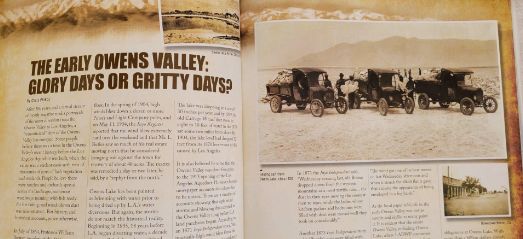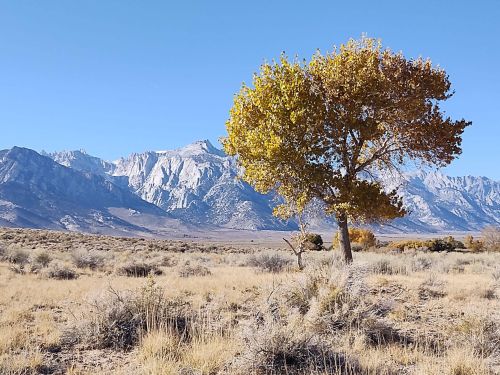Ecological Impacts of Southern California’s Thirst on the Owens Valley Region
“There it is. Take it”.
William Mulholland, mastermind behind the now 110 year old Los Angeles Aqueduct, spoke these words as water first surged down through the channel and began to make its way towards Southern California. Now over a century later, the region has heeded Mulholland’s order, demanding water at alarming rates and leaving a slew of ecological problems in its wake.
The Los Angeles Aqueduct, spanning a total of 419 miles from its start in the Owens Valley to its end in the San Fernando Valley, carries an average of over 430 gallons of water per day. This has increased greatly since the aqueduct’s inception, rising to meet the ever-pressing demands placed by a growing population in the Los Angeles Metropolitan Area and other surrounding cities.
As such, the number of water projects also increased accordingly. In 1930, the Mono Basin Extension Project launched, branching the Los Angeles Aqueduct northward and diverting even more water south. In 1970, a second Los Angeles Aqueduct split from the original at Haiwee Reservoir and increased the capacity of the water project by 50%.


Snowy Plover Charlotte Allen
Different sources emerged, as well. Looking to import more water, Southern California reached towards the Colorado River. Today, the Colorado supplies around 25% of SoCal’s water. The California Aqueduct, transports precious water from the Sacramento-San Joaquin Delta, which makes up a significant portion of Southern California’s imported water supply.
Importing water comes with the innate side effect of altering the natural ecosystems of the regions where the water is sourced. Historically, one of the most catastrophic examples of this was the destruction of Owen’s Lake. Prior to the diversion of the lake’s water in 1913, Owens Lake abounded in a particular wetland habitat known as an alkali meadow. These meadows were reliant on the high water table in Owens Valley and the alkaline soils that are characteristic of the region. Diversion of water in the valley towards Los Angeles, combined with unsustainable levels of groundwater depletion, has left these meadows withered, full of invasive plant species, and ultimately ecologically devastated. Lowered water levels in the lake transformed the region of rich biological diversity into a dry wasteland with thick alkaline crusts that discouraged life in the lakebed. Paired with this was a high level of airborne particulate matter caused by the dry conditions, which contributed to unhealthy amounts of air pollution in Owens Valley. Simply put, the choice to redirect natural flow to fit the needs of Southern California left the region in ruin. Today, alkali meadows are classified by the California Natural Diversity Database as “very threatened.”
Restoration efforts of Owens Valley have come about through agreements between Inyo County (where the Owens Valley is located) and Los Angeles Department of Water and Power, they devise a rewatering strategy to revitalize the previously dried up river and lake. This, along with efforts to protect and nurture native plant species such as saltgrasses and the threatened Owens Valley Checkerbloom, have partially restored the region to a healthy ecological state. Increases in the presence of shorebirds like the Snowy Plover, which had decreased severely as Owens Lake depleted, point towards the success of these projects. However, if these efforts are to survive in the long term, Southern California needs to rethink its water sourcing.

The disastrous effects on the Owens Valley demonstrate the need for Southern California to rely less on imported water to quench its thirst and emphasis ought to be placed on water conservation and reuse, rather than water from other regions at the expense of their ecosystem health.
Choosing to push forward environmentally dubious projects such as the Delta Conveyance Project recklessly disregards the fragile ecosystems from which our water is sourced and dooms California to repeat the same mistake it made with Owens Valley.
Jackson is a member of the Angeles Chapter Water Committee.



Add new comment